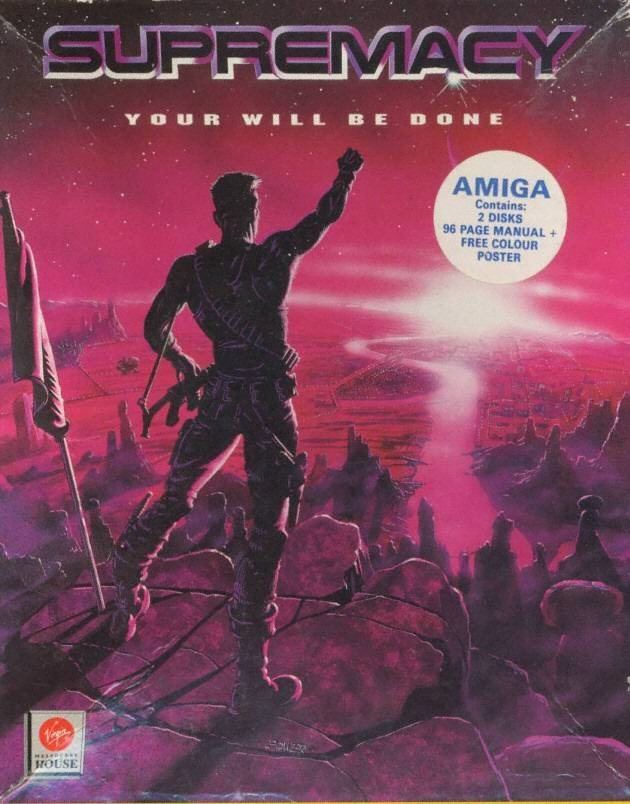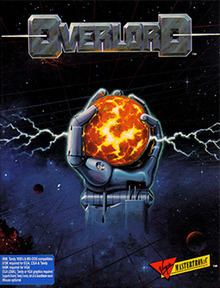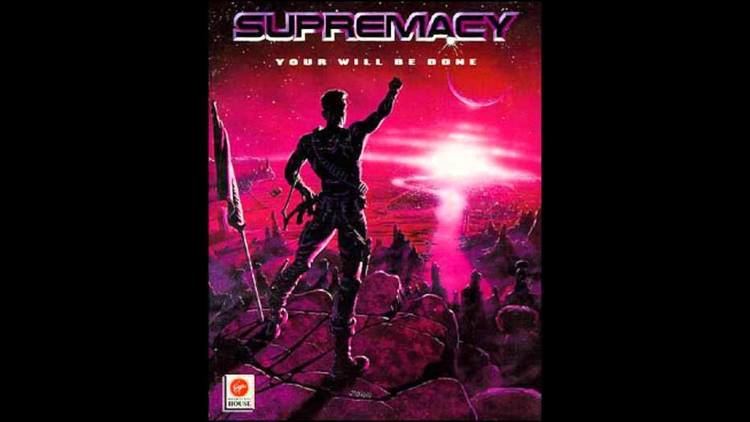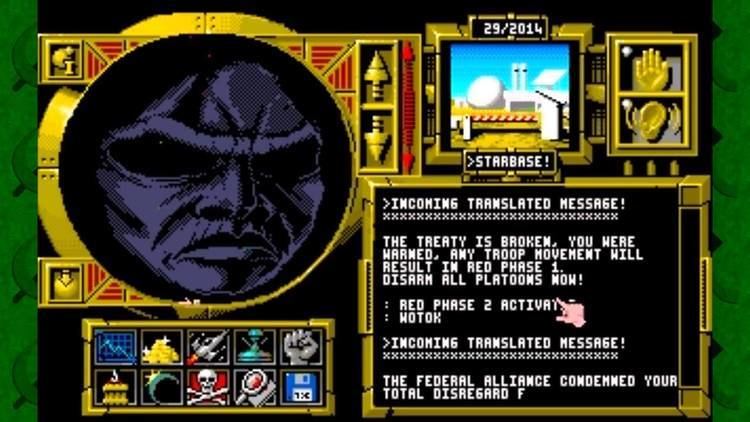8.8 /10 1 Votes
5/5 Emuparadise Developer Acclaim Cheltenham | 4/5 GamesNostalgia 4.2/5 My Abandonware Initial release date 1990 | |||||||||||||||||||||||||||||||||
 | ||||||||||||||||||||||||||||||||||
Publishers Virgin Interactive, Virgin Group Similar Cytron Masters, Mega Lo Mania, Utopia: The Creation of a Nation, Legionnaire, The Ancient Art of War | ||||||||||||||||||||||||||||||||||
Mike plays overlord aka supremacy your will be done
Supremacy: Your Will Be Done, released as Overlord in the US, is a strategy video game designed by David Perry & Nick Bruty and produced by Probe Software.
Contents
- Mike plays overlord aka supremacy your will be done
- Klagmar s top vgm 1 858 supremacy your will be done title theme
- Gameplay
- Game events
- Differences between versions
- Reception
- References

The game was initially released for the Amiga and Atari ST computers in the beginning of 1990 and later in the same year it was ported to the Commodore 64 too, but released only in the very beginning of 1991. Nearly one year later in late 1991 the game was ported to MS-DOS.

The game was also ported to the Nintendo Entertainment System in 1993. The NES cartridge has an internal battery to retain game saves; the computer versions came on two disks.

The NES version was among the last titles released for the platform and is relatively rare. The NES version is also noted for having very few sounds or music (mainly just the title theme composed by Jeroen Tel).

A Hungarian group of Commodore Plus/4 enthusiasts ported the game to the Plus/4 in 1993.
Klagmar s top vgm 1 858 supremacy your will be done title theme
Gameplay

The goal of Supremacy is to create and protect a network of planetary colonies and defeat a computer adversary who is trying to do the same. There are four skill levels, each represented by an enemy race, and each featuring a progressively stronger opponent. The more advanced a system is, the more freedom a player has when purchasing spacecraft. Higher skill levels also result in different numbers of planets in each system.

The game is controlled using a mouse pointer, and important information is displayed in a message box at the bottom of most screens. Following the introduction screen, the player chooses which planetary system to enter. Planetary systems differ in the number of planets they contain, the types of spacecraft and equipment that can be purchased, and the strength and aggressiveness of the artificial intelligence. The first system contains eight worlds and allows access to only the most basic equipment. The second system has sixteen planets and slightly better equipment. The remaining systems increase in size and strength similarly.
The player and his opponent both begin with control over a single colonized planet in the chosen system. All other planets in between are uninhabited and up for grabs. The player then must set up and maintain thriving colonies on as many planets as possible, and build up an industry and military strong enough to fend off the opponent. Because of the randomness of a system's initial make-up, the order in which planets are colonized has a great subsequent effect upon gameplay.
Before building a colony, planets need to first be terraformed using an atmospheric processor. As a planet's population grows, more taxes can be sent to a player's home starbase. However, in order to survive, colonies need to be supplied with food and energy. The player provides food by buying and placing farming stations on the colony, or by transferring them on starships as cargo. Energy comes from purchasing orbiting solar satellites, but can also be transferred as cargo. Cargo shipments consume fuel, so the player needs to also purchase mining stations. Balancing these and similar factors constitutes the main challenge of the game.
As the player expands his or her empire, he must also create planetary defenses. Defense is achieved by building and maintaining defensive ground armaments on a world. The ability to attack comes from purchasing a battle cruiser and arming it with combinations of both homing and ballistic missiles and hover tanks, then sending the ship to attack an enemy planet's defenses. Planets are taken by eliminating all ground defenses on an enemy world. The only way to win control over a system is to attack and conquer the enemy's starbase in that system. The only way to beat the game is to take the starbase of the last system, Yottsu. Likewise, if the player's home starbase is defeated, the game ends and the player loses.
The NES version game could be considered an early example of real-time strategy, allowing direct control over missile launch, and hover tanks (1 on the map at any given time) on the offensive side, while offering direct control over the plasma cannon defense base and partial control over the pom-pom cannon and lightening field defense bases. The MS-DOS version did not have these units, and so could only be remotely considered for this classification.
Game events
Throughout the game the player will receive messages that affect some or all of your planets, ships, equipment, or storage levels on worlds. Some are beneficial while others are harmful, and nearly all of them require immediate action by the player.
If the game is played for a long enough time, most of these events will occur multiple times.
Differences between versions
The NES version is a port of the earlier computer versions. However, there are several differences between them: The NES version uses fewer screens than its homecomputer counterparts, even fewer sounds, and much simplified controls. While the original game uses units of soldiers in platoons which were upgradeable, the NES game condensed the battle elements to missiles and hover tanks against ground defenses, none of which can be upgraded. The message area is much larger in the other versions, and placed along the right hand side of the screen, compared to bottom center of the NES game. The NES game allows a single saved game to be stored, compared to up to four on the homecomputer games. In the NES version only credits are required to buy craft, whereas the original versions require the player to spend money, minerals, fuel and energy (though this varies depending on the difficulty level). Finally, the use of the docking bays is more complex in the computer games, and the other versions have a feature where an image of the face of the enemy grows clearer the closer the player is to defeating the game.
Reception
The main theme composed by Jeroen Tel is recognized as one of the best SID musical compositions ever made, reaching the 52nd spot among almost 30,000 entries in the High Voltage SID Collection.
Computer Gaming World in 1991 described the computer version of the game as "easy to learn and a delight to play ... Overlord conquered this reviewer's taste". In a 1992 survey of science fiction games the magazine gave the title one-plus stars of five, stating that the computer opponent did not adapt to faster clock speeds and became unplayable. Flyingomelette gave the NES version a rating of 2/10 stars, saying, "It isn't often that a game comes along that challenges my notions of just how bad a game can really be. (...) What appeared to be a very promising simulation and strategy game for the NES, ends up being a complete disaster, due to the many elements that all work against you, all at once, much too quickly".
